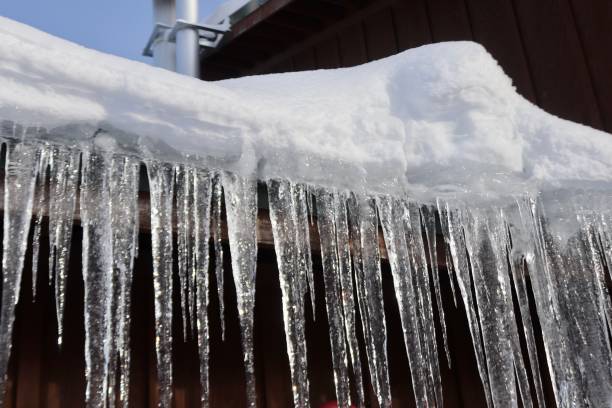Protect Against Frozen Pipes in Cold Weather: Professional Tips
Protect Against Frozen Pipes in Cold Weather: Professional Tips
Blog Article
This post further down involving Winter Plumbing Precautions: Preventing Frozen Pipes is especially engaging. Don't miss out on it.

Winter can damage your plumbing, particularly by freezing pipelines. Below's exactly how to avoid it from taking place and what to do if it does.
Introduction
As temperature levels decrease, the danger of frozen pipes boosts, potentially bring about costly fixings and water damages. Comprehending exactly how to stop icy pipelines is crucial for house owners in chilly climates.
Prevention Tips
Protecting vulnerable pipes
Wrap pipelines in insulation sleeves or utilize warm tape to secure them from freezing temperature levels. Concentrate on pipelines in unheated or outside areas of the home.
Heating techniques
Keep indoor areas appropriately warmed, particularly locations with pipes. Open up cabinet doors to permit warm air to distribute around pipelines under sinks.
How to recognize icy pipelines
Try to find decreased water flow from taps, uncommon smells or noises from pipelines, and visible frost on exposed pipes.
Long-Term Solutions
Architectural modifications
Take into consideration rerouting pipelines away from outside wall surfaces or unheated areas. Include additional insulation to attic rooms, cellars, and crawl spaces.
Updating insulation
Invest in premium insulation for pipes, attics, and wall surfaces. Correct insulation assists maintain consistent temperature levels and lowers the danger of frozen pipes.
Protecting Exterior Pipes
Garden tubes and exterior faucets
Disconnect and drain pipes yard hose pipes before winter. Mount frost-proof faucets or cover outdoor faucets with protected caps.
Comprehending Icy Pipes
What causes pipelines to ice up?
Pipes freeze when revealed to temperatures listed below 32 ° F (0 ° C) for prolonged periods. As water inside the pipelines freezes, it broadens, taxing the pipe walls and possibly creating them to rupture.
Risks and damages
Icy pipelines can lead to water system disturbances, building damages, and expensive repair work. Burst pipes can flood homes and cause extensive architectural damages.
Indicators of Frozen Pipeline
Identifying icy pipes early can prevent them from bursting.
What to Do If Your Pipelines Freeze
Immediate actions to take
If you presume icy pipelines, maintain taps available to eliminate stress as the ice melts. Use a hairdryer or towels taken in warm water to thaw pipes slowly.
Verdict
Stopping frozen pipelines needs positive measures and fast feedbacks. By recognizing the reasons, signs, and preventive measures, home owners can safeguard their pipes during winter.
5 Ways to Prevent Frozen Pipes
Drain Outdoor Faucets and Disconnect Hoses
First, close the shut-off valve that controls the flow of water in the pipe to your outdoor faucet. Then, head outside to disconnect and drain your hose and open the outdoor faucet to allow the water to completely drain out of the line. Turn off the faucet when done. Finally, head back to the shut-off valve and drain the remaining water inside the pipe into a bucket or container. Additionally, if you have a home irrigation system, you should consider hiring an expert to clear the system of water each year.
Insulate Pipes
One of the best and most cost-effective methods for preventing frozen water pipes is to wrap your pipes with insulation. This is especially important for areas in your home that aren’t exposed to heat, such as an attic. We suggest using foam sleeves, which can typically be found at your local hardware store.
Keep Heat Running at 65
Your pipes are located inside your walls, and the temperature there is much colder than the rest of the house. To prevent your pipes from freezing, The Insurance Information Institute suggests that you keep your home heated to at least 65 degrees, even when traveling. You may want to invest in smart devices that can keep an eye on the temperature in your home while you’re away.
Leave Water Dripping
Moving water — even a small trickle — can prevent ice from forming inside your pipes. When freezing temps are imminent, start a drip of water from all faucets that serve exposed pipes. Leaving a few faucets running will also help relieve pressure inside the pipes and help prevent a rupture if the water inside freezes.
Open Cupboard Doors
Warm your kitchen and bathroom pipes by opening cupboards and vanities. You should also leave your interior doors ajar to help warm air circulate evenly throughout your home.

I'm just very inquisitive about How To Avoid Freezing Pipes and I hope you appreciated the new article. For those who enjoyed reading our blog posting kindly don't forget to share it. I love reading our article about Helpful Tips to Prevent Frozen Pipes this Winter.
Information Here Report this page